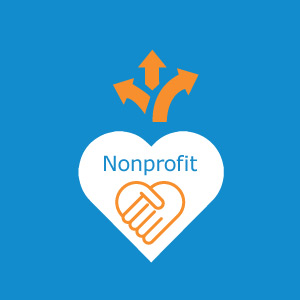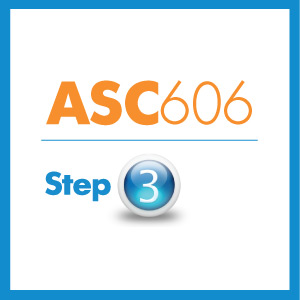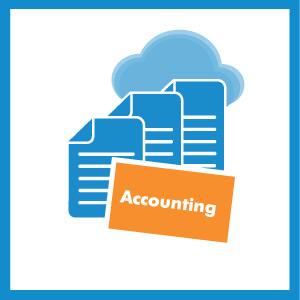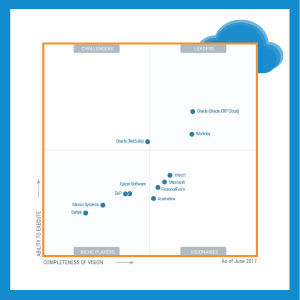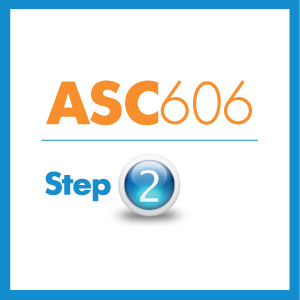A lot to cover, and not a lot of time to make it happen. ASC 606 is bearing down, and public organizations are in the final countdown. For private organizations, 17 months is not that long of a time, because you will need to get your accounting, legal, sales, and others on board, decide how you intend to transition, and make the move. Simply put, it’s not easy.
This is why we are breaking down the 156-page standard and providing key takeaways, including who ASC 606 affects, a brief overview on the five steps, and a look at how ASC 606 will affect different industries, but today we would like to introduce a deeper look at each step:
- Identify Contract(s) with a Customer
- Identify Performance Obligations in the Contract
- Determine the Transaction Price (Today)
- Allocate the Transaction Price to the Performance Obligations in a Contract (August)
- Recognize the Revenue When (or as) the Entity Satisfies a Performance Obligation (September)
ASC 606 Deep Dive Step 3: Determining the Transaction Price
Biggest Impacts: Aerospace and Defense, Asset Managers, Construction, Building, Engineering, Healthcare, Licensors, Software
From variable consideration to financing components to noncash considerations, there are many pitfalls that occur in determining the transaction price that make step three a complicated one.
In simple terms, the transaction price is the amount of consideration to which an entity expects to be entitled in exchange for transferring goods and/or services to a customer. ASC 606 gives attention to the following factors in transaction price:
- Variable Consideration
- Constraining Estimates of Variable Consideration
- The Existence of a Significant Financing Component
- Noncash Consideration
- Consideration Payable to the Customer
Variable Consideration (and the Constraint)
An entity estimates the amount of variable consideration to which it expects to be entitle, taking into account the risk of revenue reversal in making the estimate. 602-10-32-5 through 606-10-32-9 look into some of the determinations of variable consideration, which we look into below.
Fixed vs. Variable Consideration
The first, most obvious determination that needs to be made in this is whether the consideration is fixed or variable. If the consideration is fixed, include the consideration in the transaction price. However, if the contract includes discounts, rebates, refunds, credits, price concessions, incentives, performance bonuses, penalties, or other similar items, there are different steps to determining the price.
Expected Value vs. Most Likely Amount
There are two methods in estimating the amount of variable consideration, depending on whichever one better predicts the amount of consideration to which it is entitled.
- The expected value—The expected value is the sum of probability weighted amounts in a range of possible consideration amounts. This method is best used when an entity has a large number of contracts with similar characteristics.
- The most likely amount—The most likely amount is the single most likely amount in a range of possible consideration amounts. This method is best used when the amount of variable consideration has only two possible outcomes.
Additional Determinations in Variable Consideration
In this, there are some additional observations made by KPMG that can impact the variability of the transaction price:
Consideration Could be Variable Even if Price Stated in the Contract is Fixed
Promised consideration could be determined to be variable if an entity’s customary business practices indicate that the entity may accept a price lower than stated in the contract (for example, an implicit price concession). To address this, the entity needs to determine whether it has offered an implicit price concession or has chosen to accept the risk of default from the customer.
Variability of Consideration in the Event of an Undefined Quantity of Output
In the event that a contract is for an undefined quantity at a fixed contractual rate, consideration may be variable. In this, it’s important for the entity to determine how to treat the consideration under the new standard (distinct series of goods and/or services, stand-ready obligation, or an obligation to provide specified goods and services)
Is it a Customer Option or Variable Consideration?
This is an important note, as an entity needs to determine whether purchases of additional goods and services are variable consideration or customer options.
Customer options exist when the customer is not contractually obligated to pay consideration and the entity is not obligated to transfer goods or services. In this event, an entity needs to evaluate the options to determine whether they include a material right.
Comparatively, if the terms of the contract require a vendor to stand ready to transfer the goods and/or services, and the customer does not make a separate decision to purchase, the future event results in additional consideration.
Volume Discounts and Rebates May Convey a Material Right
Different structures and rebates may have different effects on the transaction price. In the event that a vendor offers discounts or rebates, pricing, variability, and the existence of material right is determined on when the discount is applied (retroactively upon customer meeting threshold vs. discount beginning after customer meets threahold)
KPMG provides additional looks at exchange rates and whether liquidated damages represent variable consideration or warranty in their Revenue Issues In Depth Article.
Reassessment of Variable Consideration
At the end of each reporting period, an entity shall update the estimated transaction price (including updating its assessment of whether an estimate of variable consideration is constrained) to represent faithfully the circumstances present at the end of the reporting period and the changes in circumstances during the reporting period. The entity shall account for changes in the transaction price.
Constraining Estimates of Variable Consideration
An entity shall include in the transaction price some or all of an amount of variable consideration estimated in accordance with paragraph 606- 10-32-8 only to the extent that it is probable that a significant reversal in the amount of cumulative revenue recognized will not occur when the uncertainty associated with the variable consideration is subsequently resolved.
To determine the impacts of the estimates, an entity needs to determine how likely and how impactful a revenue reversal would be. Factors in determining this probability include:
- Factors outside the entity’s influence (market factors, third-party factors, weather)
- Time period surrounding the uncertainty
- Entity’s experience with similar contracts
- Entity business practices (i.e. entity has a history of offering concessions or changing terms)
- A broad range of consideration amounts
Examples of possible constraints are discussed in the KPMG Revenue Issues in Depth Guide.
The Existence of a Financing Component
If a significant financing component exists, the entity will need to adjust the promised amount of consideration based on the time value of money. To make this assessment, the entity must consider relevant factors, including:
- Difference between promised consideration and the cash selling price
- Combined effect of the expected length of time between the transfer of goods or services and the customer paying for those goods or services.
- Interest rates in relevant markets
Observations Pertaining to Significant Financing Components
Some important implications exist in determining whether significant financing components exist and should be accounted for, as discussed below:
Assessment Taken at Individual Contract Level
When looking at whether or not a financing component is significant, the entity determines the significance of the financing component at the individual contract level as opposed to the portfolio level.
No Significance if Transfer of Goods or Services is at Customer’s Discretion
In the event the customer pays for goods or services in advance (e.g. prepaid phone cards, gift cards), it is at the customer’s discretion on when he or she purchases said goods or services. In this event, there is no significant financing component.
Long Term or Multiple-Element Arrangements
In long-term or multiple arrangement contracts (transfers at various points in time, cash payments throughout the contract, changes in estimated timing), an entity faces complexity in determining the time value of money.
There are many additional observations discussed, including the fact that contracts with interest rates of zero may contain in one way or another a financing component, the presentation of income interest as revenue, and determinations on whether it is important to use an interest rate explicitly stated in the contract.
Noncash Consideration
To determine the transaction price for contracts in which a customer promises consideration in a form other than cash, an entity shall measure this, depending on whether the noncash consideration can be measured:
- If it can be reasonable estimated, noncash consideration is measured at fair value.
- If it cannot be reasonably estimated, an entity is to use the stand-alone of selling price of the good or service that was promised in exchange for noncash consideration.
Consideration Payable to a Customer
In the event there is consideration paid back to the customer, an entity needs to determine if the consideration payable back to the customer should be accounted for as a reduction in transaction price, a payment for a distinct good or service, or a combination of the two.
The following table shows how an entity needs to look at consideration payable to the customer, and whether the consideration payable is a reduction in the transaction price or a purchase from suppliers:
|
Q1. Does the consideration payable to a customer (or the customer’s customer) represent a payment for a distinct good or service? (Yes/No)
|
|
Yes (Move to Q2)
|
No (Move to Conclusion 3)
|
|
Q2. Can the entity reasonably estimate the fair value of the good or service received? (Yes/No)
|
|
Yes (Move to Q3)
|
No (Move to Conclusion 3)
|
|
Q3. Does the consideration payable exceed the fair value of the distinct good or service? (Yes/No)
|
|
Yes (Q3): Excess of consideration payable is accounted for as a reduction in the transaction price, remainder is accounted for as a purchase from suppliers.
|
No (Q3): Consideration payable is accounted for as a purchase from suppliers.
|
Conclusion 3: Consideration payable is accounted for as a reduction in the transaction price and recognized at the later of when
- The entity recognizes revenue for the transfer of related goods or services
- The entity pays or promises to pay the consideration.
|
Additional Observations
In addition to the relative complexity of the above flowchart, there are additional situations that need to be analyzed by legal and accounting teams.
Payments to Distributors and Retailers
A common practice in the CPG industry, payments from brands to distributors or retailers are sometimes accounted for as identifiable goods or services. In these cases, the goods and services provided by the customer may be distinct from the customer’s purchase of the seller’s products. Refer to questions 2 and 3 on the flowchart above.
Scope of Consideration Payable to the Customer is Wider than Payments Made under the Contract
In the event that an entity pays a customer consideration, and the scope of the consideration payable is wider than the payments made under the contract, the entity will need to develop a process for evaluating whether any other payments made to a customer are consideration payable to a customer.
This adds more complexity if payments are made to a customer’s customer and if the amounts paid are outside the direct distribution chain (client/agency relationships, etc.).
Conclusion: Time to Get Moving
17 months may seem like a long time (it’s only five if you’re a public entity), but many organizations are seeing challenges in making the move to implement new processes and systems to meet the requirements of the new standard.
Even if we’re posting monthly blogs leading up to the effective date, you should already be looking at transition methods and other industry-specific considerations that you need to make. To address this, we’ve compiled a list of resources for companies looking to prepare for the upcoming standard:
On Demand Webcasts: ASC 606/IFRS 15
Intacct recently presented a three-part series on the new standards, which you can view on-demand.
We welcome you to peer through the full text, the AICPA guidance, and to get in contact with us to learn more about preparing for ASC 606 with outsourced accounting services and/or a new accounting software designed with new RevRec Standards in mind.

